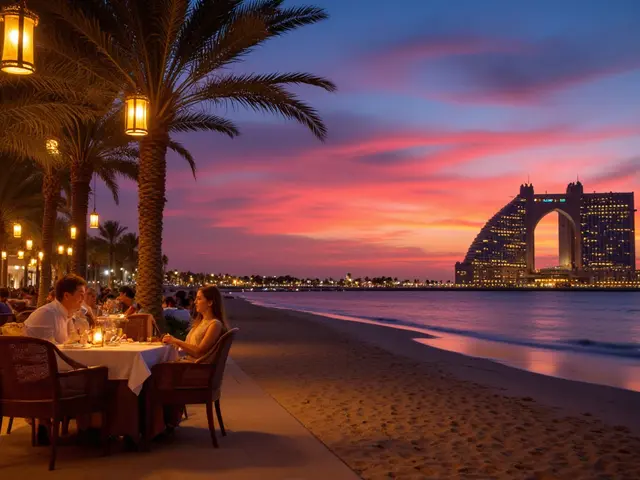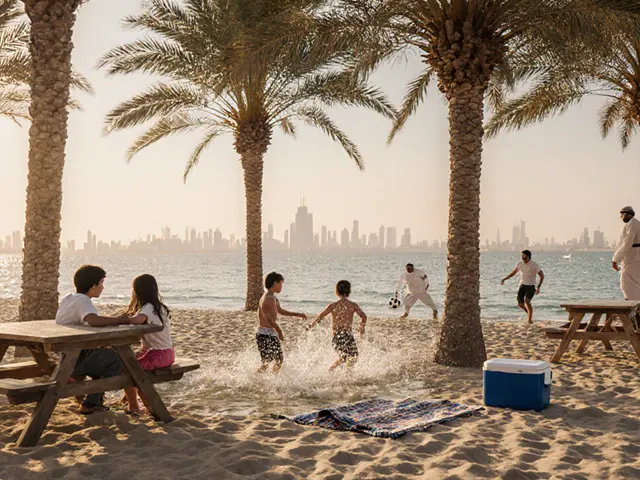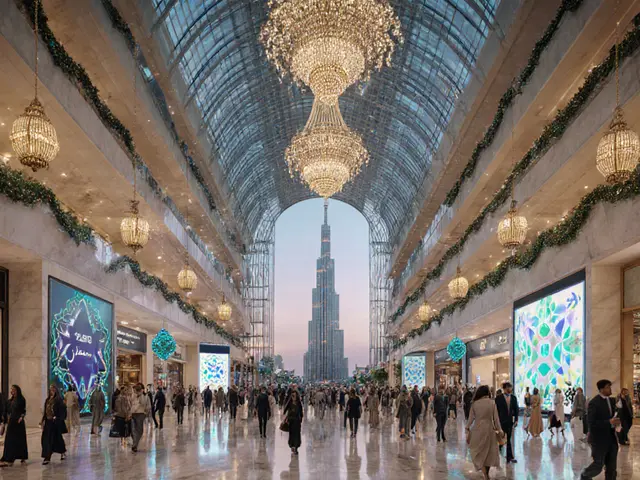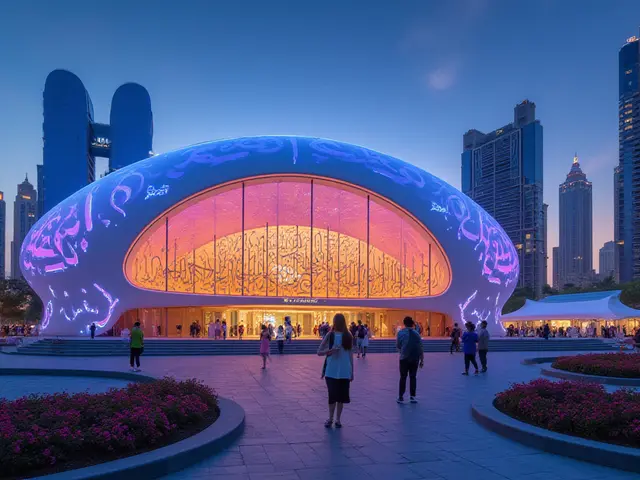Blink and you might miss another jaw-dropping addition to Dubai’s skyline. In Dubai, iconic buildings are more than steel and glass—they drive the market, shift living patterns, and even reframe what the city stands for. When you spot the twisting Cayan Tower or the outstretched sails of the Burj Al Arab, you’re seeing statements: about ambition, international status, and yes, hard economic impact. While tourists snap the perfect Instagram from the Palm Jumeirah, the real story quietly unfolds in hotel receipts, property values, and late-night brainstorming in offices that didn’t exist two decades ago.
The Financial Pulse: Dubai’s Buildings & Direct Economic Benefits
Stack up the numbers, and Dubai’s headline-grabbing architecture does more than impress visitors. These structures act as economic engines. Take Burj Khalifa—over 100,000 paying tourists take the elevator to its upper decks every month, each dishing out between AED 150 to AED 500 per visit depending on the time and experience. At The Dubai Mall beneath, footfall regularly tops 80 million visitors a year, largely thanks to that famous tower shadowing the fountains below. The ripple effect touches everything: cafes, luxury shops, pop-up markets, and even ride-hailing apps like Careem and Uber.
There’s also the magic of events. Expo 2020 was powered by spaces like Al Wasl Plaza—now pivoted to a cultural hub. Not only did these buildings pull in global businesses, they delivered a surge in demand for hospitality, catering, and event planning services, a bonanza for SMEs and hotel chains alike. Local companies and global brands sponsored key events, steadily feeding Dubai’s advertising, logistics, and legal sectors.
If hospitalities are looking for numbers, consider how the Burj Al Arab, with its seven-star branding, pushes up room rates citywide. A table at Al Mahara might cost over AED 1,000 per head—not just for the food, but for bragging rights in a space that shouts Dubai luxury. Add Atlantis, The Palm and Jumeirah Emirates Towers to the mix, and deluxe occupancy rates steadily beat the global average for urban luxury hotels, even across off-peak months.
It’s not just tourism, either. Iconic business addresses (think Emirates Towers or ICD Brookfield Place in DIFC) command some of the highest office rents in the Middle East—over AED 3,000 per square metre per year for top-grade spaces. Multinationals choose these locations for their image boost and the prestige ripple that comes with a Burj Khalifa zip code. The knock-on? Increased demand for high-end services, from interior fit-out firms to gourmet caterers to translation consultants. More jobs. More skills. A step-up for homegrown SMEs keen to get listed among Dubai Properties’ or Emaar’s go-to contractors.
Property Value, Real Estate, and the Dubai Dream
Nowhere is Dubai’s boldness more visible than on real estate apps. Ever compared prices for an apartment with a full view of the Burj Khalifa against one without? The premium is real—data from local agents like Allsopp & Allsopp or Bayut show Burj-facing units can sell for 15-20% more, with rents tracking upwards of AED 140,000 a year for a one-bedroom. Living in the shade of these icons isn’t just about comfort—there’s status, security, and closer ties to the city’s action.
Look at areas transformed by buildings like the Museum of the Future, which has recently turned the once-sleepy stretch between DIFC and Emirates Towers into prime real estate. Developers like Meraas and Nakheel snap up plots, launching off-plan sales that sell out within days, often to investors from India, China, and Europe, all hungry for a slice of futuristic Dubai. Each land sale means contractors put hardhats on the ground, supply chains buzz, and the local workforce gets a boost.
It’s not a one-way street, though. The city has learned from earlier booms and busts. Freehold laws, RERA oversight, and escrow protections build trust in the property market, making it less volatile and more attractive to global investors. Dubai Land Department’s use of blockchain in property transfers cuts paperwork and time, boosting confidence and appeal across cultures—essential, given how international Dubai’s property buyers are.
The “Dubai dream” isn’t just hype. For many expats—especially young professionals—a home with a skyline view offers more than just a place to crash. It’s a springboard for careers, networking, and an entry into Dubai’s famously social brunch and after-hours culture, all in the shadow of these modern wonders.
Tourism and Culture: Beyond the Selfie
Tourists don’t just line up for the Burj Khalifa’s dizzying heights—they pour into nearby Souk Al Bahar, hop on abra rides at the Dubai Fountain Lake, or linger at downtown food festivals like Taste of Dubai. Attractions like Atlantis Aquaventure and the observation deck at Address Sky View account for a good chunk of yearly visitor spending, with Dubai racking up 17.15 million international visitors in 2023, according to Dubai’s Department of Economy and Tourism. And when you toss in the festivals—Dubai Shopping Festival, Art Dubai, or even Ramadan nights at Jumeirah Mosque gardens—the city’s landmark buildings act as anchors for social life, tech expos, and pop culture trends.
Culture doesn’t end at marble lobbies. The impact of these buildings stretches into design studios, art galleries, and homegrown café startups. Hidden behind the Museum of the Future, you’ll spot co-working hubs that give start-ups a launchpad, or creative branding firms that snag international clients thanks to that “Dubai Innovation” signature. The city’s icons indirectly support these ventures, fueling talk about Dubai as a center for ideas and invention, not just trade.
Here’s a tip: If you’re new in town and craving a cultural fix, schedule a Heritage Walk in Al Fahidi Historic District after a morning at Burj Khalifa’s At the Top. The old Dubai meets the new, and you’ll see firsthand how the old wind towers and the modern skyline tell the same story: ambition, reinvention, and daring to dream bigger.
| Landmark | Annual Visitors (approx.) | Economic Impact (AED Billions) |
|---|---|---|
| Burj Khalifa | 2.1 million | 2.5 |
| Dubai Mall | 80 million | 16 |
| Burj Al Arab | Not disclosed (luxury clients) | 1.2 |
| Atlantis The Palm | 1.5 million | 3.6 |
Contrast that to cities without a skyline—Dubai’s cultural offer is bigger than the sum of its shopping malls. There’s a rhythm to life in its icons: a sunrise yoga class at Burj Park, rooftop shisha as the city lights up, late-night souks under the arched canopies of Madinat Jumeirah. All these micro-moments add up, creating jobs in events, hospitality, retail, and creative sectors.
Tradition, Identity, and the City’s Future
For long-time Dubai residents, there’s a quiet pride in seeing how icons like Burj Khalifa have woven themselves into national celebrations. Fireworks at New Year’s Eve aren’t just pyrotechnics—they’re a show of unity, ambition, and a city always looking skyward. Yet, despite the buzz, Dubai’s leaders know that identity matters. Planners and architects are careful not to bulldoze the past. Take the design for Al Seef or Al Shindagha: blending Emirati wind towers with sleek waterfront promenades, drawing tourists but also re-centering local tradition in the narrative.
Young Emiratis and expats find themselves reflected in these symbols. There’s a sense of belonging—forged in Friday family picnics under Burj Park’s palms, or Suhoor at sky-high lounges during Ramadan. Brands like Emaar and Nakheel, household names by now, engineer their buildings to host festivals tied to national holidays, reflecting values rooted in hospitality, generosity, and innovation. Even Dubai Metro, ribboning its way through the city, echoes the ambition and accessibility that define UAE’s approach to growth.
Looking ahead, there’s already talk of the next wave of icons—Dubai Creek Tower, Cityland Mall’s green domes, the Museum of the Future’s AI-powered exhibits. These aren’t just trophies; they’re a practical response to climate, tech, and culture. Energy efficiency, digital inclusion, and accessible design are priorities. If you’re in the market for investment, keep an eye on these new anchors; early buy-ins often give better yield and more choice of units, especially with EXPO City pivoting to a smart city district.
For those living in or moving to Dubai, the tip is simple: get involved in the story. Attend openings, visit galleries inside icons like The Opus or Dubai Opera, sign up for business incubators or wellness classes. The city’s buildings aren’t just backdrops—they’re entry points to big ideas, real friendships, and new opportunities, all grounded in the energy that only Dubai can generate.



